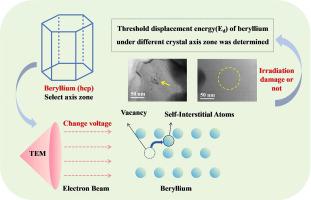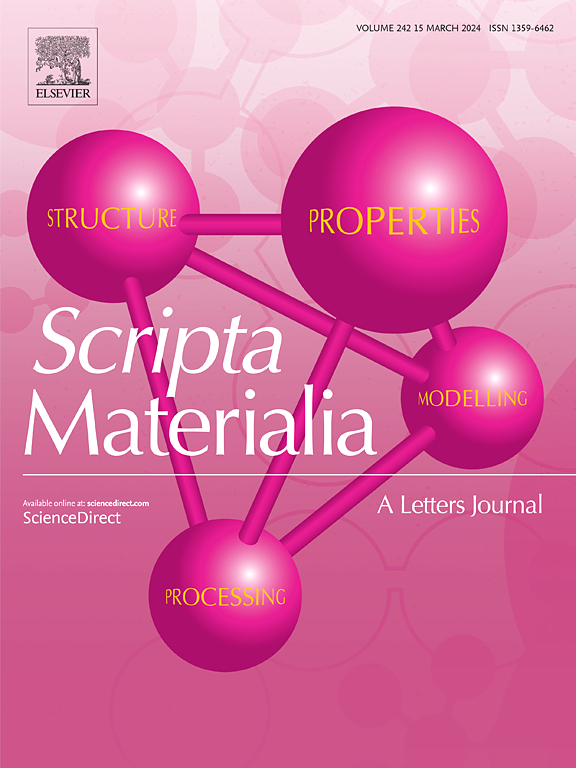铍中阈值位移能的实验测量
IF 5.6
2区 材料科学
Q2 MATERIALS SCIENCE, MULTIDISCIPLINARY
引用次数: 0
摘要
阈值位移能是定义和表征材料辐照损伤的最基本参数。然而,铍的Ed没有可用的实验值。利用传统的透射电子显微镜对铍的电子能谱进行了实验测定。分析了铍在< 0001 >,<011¯0> <12¯13¯>;和& lt; 21¯1¯0祝辞。对于铍,沿这些方向的Ed值为:Ed<;0001≥35.0±0.8 eV, Ed<011¯0≥30.5±0.7 eV, Ed<12¯13¯≥29.0±0.7 eV和Ed<;21¯1¯0≥27.6±0.8 eV。本文还讨论了铍的位移阈值能与取向的关系。本文章由计算机程序翻译,如有差异,请以英文原文为准。

Experimental measurement of threshold displacement energy in beryllium
Threshold displacement energy (Ed) is the most fundamental parameter defining and characterizing the irradiation damage of materials. However, there are no experimental values of the Ed available for beryllium. The beryllium’s Ed has been experimentally determined using conventional transmission electron microscopy. The orientation dependence for the onset of electron damage has been analyzed for beryllium when irradiated along 〈0001〉, <010>, <1> and <20>. The values of Ed along these directions are found to be for beryllium, Ed<0001≥35.0 ± 0.8 eV, Ed<010 ≥ 30.5 ± 0.7 eV, Ed<1≥29.0 ± 0.7 eV and Ed<20 ≥ 27.6 ± 0.8 eV. The orientation dependence of the displacement threshold energy of beryllium has also been discussed.
求助全文
通过发布文献求助,成功后即可免费获取论文全文。
去求助
来源期刊

Scripta Materialia
工程技术-材料科学:综合
CiteScore
11.40
自引率
5.00%
发文量
581
审稿时长
34 days
期刊介绍:
Scripta Materialia is a LETTERS journal of Acta Materialia, providing a forum for the rapid publication of short communications on the relationship between the structure and the properties of inorganic materials. The emphasis is on originality rather than incremental research. Short reports on the development of materials with novel or substantially improved properties are also welcomed. Emphasis is on either the functional or mechanical behavior of metals, ceramics and semiconductors at all length scales.
 求助内容:
求助内容: 应助结果提醒方式:
应助结果提醒方式:


